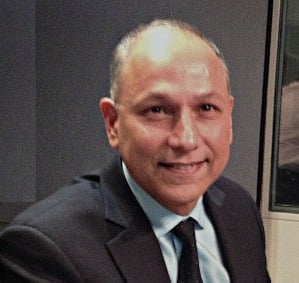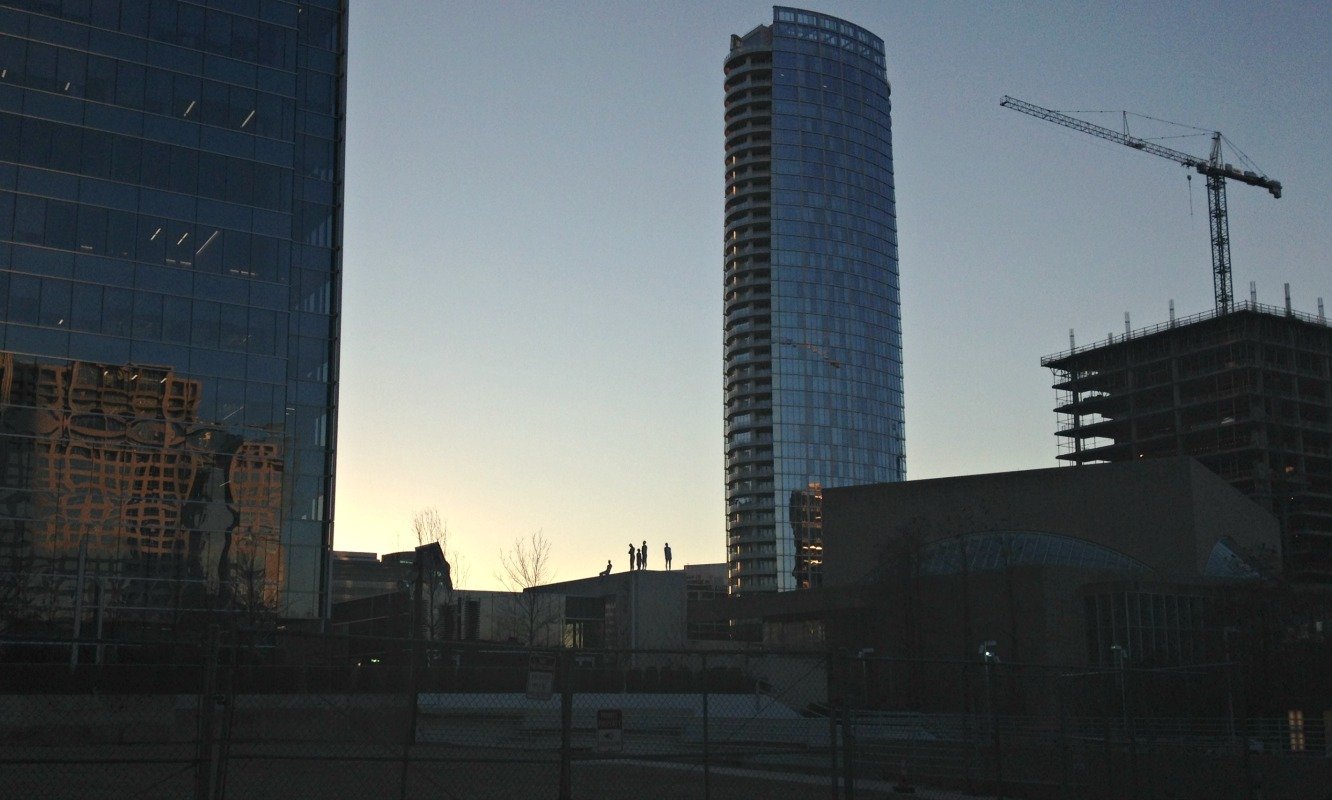State Of The Arts: Can This Be The New Gateway To Dallas’ Arts District?
ArtandSeek.net January 20, 2017 19Eight years ago, there was no Winspear Opera House, no Wyly Theatre, no Klyde Warren Park, no City Performance Hall. All that happened in just eight years – which is one reason a new blueprint has been drawn up for future development in Dallas’ Arts District. In State of the Arts, our weekly look at what’s making news in North Texas culture, Jerome Weeks reports planners went back to the drawing board – back to the original plan from 1982.
There’s long been plenty of reasons to visit Dallas’ Arts District: to listen to the Dallas Symphony, attend the Dallas Theater Center, visit the Dallas Museum of Art, watch the Dallas Black Dance Theatre — that’s just a sampler.
But if you do any of that, you probably already know there are very few reasons to stick around there. There are no stores, no street vendors, no dance clubs. And if the food trucks aren’t at Klyde Warren, there aren’t many affordable eateries or bars, either, unless you know where to look — tucked away in One Arts Plaza, for instance, probably several blocks from you.

Mostly, all you see around you are office towers and parking lots. And it’s been that way for decades – even though the city’s original plan for the district, called the Sasaki Plan, envisioned it full of shops, apartments and art centers. What happened was after the city came out with the plan 35 years ago to help revitalize a neglected corner of downtown, real estate developers bought up much of the remaining land — and rents went through the roof. No normal commercial outlet could afford to set up shop on the street there. Many restaurants and coffee shops in the district today — often inside the office towers — are subsidized as a benefit to leaseholders. They’re essentially workers’ cafeterias. That’s why they’re generally closed at night and on weekends — just when the theater-going, museum-visiting, concert-loving crowds wander past.
But this desert of urban amenities has slowly been changing, says Peer Chacko. He’s the city’s chief planning officer.
“We’ve gone from a downtown that was largely an employment center,” he says, “to one that now has over 8000 residents and is growing exponentially, and an Arts District that’s now become an attractive location for new development. So there was clearly a need for us to go back to what’s now a pretty old plan.”

Peer Chacko
Dallas Arts District – the organization that’s part of Downtown Dallas, Inc., the non-profit improvement district – hired the urban planning firm NBBJ. The idea was to find and retain what was good in Sasaki and update the rest. For instance, a chief complaint against the current layout of the Arts District has been that it keeps the arts away from major streets by clustering them into an enclave, almost an enclosed community, perpetuating the old image of the arts as aloof and elitist. That clustering was 1980s thinking, says Alex Krieger, the principal designer from NBBJ. The idea at the time was that arts organizations needed to be more or less protected from the urban wilderness. Remember: The Arts District began as a plan to renew a decrepit area of town that was nothing but old warehouses and a dairy plant.
The real pressure to update the Sasaki Plan came from new developments already going up (1900 Pearl, right next to the Meyerson) and others on the drawing boards. Several new developments, for example, will be along Ross Avenue near the I-75 overpass. Lily Weiss, director of Dallas Arts District, hopes there’s still time to influence those projects. That’s because, she says, Ross Avenue may be the district’s last, best chance to integrate retail, traffic and pedestrian use. Right now, that area is mostly broken concrete, parking lots, weeded lots, a liquor store and an overpass that’s dark, dangerous and difficult to walk through.
“Thirty years ago,” says Weiss, “I don’t think we ever thought that that was going to be the new gateway. That was all car lots back then. So basically, if we were to do this again, the Arts District wouldn’t have turned our backs to Ross. We would have been more thoughtful about pedestrian traffic. But we weren’t about pedestrian traffic then.”
So in one phase of the new plan (actually, it’s “Priority 5”), Ross Avenue gets upgrades and more retail. Another major gateway the new plan addresses (“Priority 1”) is Pearl Street, which splits the Arts District with a white-water river of commuter traffic. Even as Pearl physically links the District across Woodall Rodgers to Uptown, it can be life-risking to cross.

Pearl Street at rush hour. Good luck, pedestrians!
“Most streets in downtown,” explains Chacko, “have been designed to promote efficient movement of vehicles in and out of downtown at peak hours. And that was fine for the time when that was the only purpose of streets in downtown. So now we have been really looking at how we can re-balance that.”
The plan isn’t to slow down or shrink Pearl Street. “Re-balance” means to make Pearl’s sidewalk-level experience safer and easier – with better crosswalks, with trees to provide shade for pedestrians, even with better signs so people getting off at DART’s Pearl Street station will now know the Arts District is just over there, a few blocks away. Currently, they have no indication. Not so long ago, I rode DART regularly, and when the train would emerge, headed south from the tunnel near the overpass and head into the Pearl Station, passengers would occasionally crane their necks and point, asking each other, ‘Is that the Meyerson?” Or “Is that the Winspear?”
Usually, they were pointing at the parking garage of the Dallas Marriott City Center hotel.
Improving signs or lighting, changing city zoning ordinances so those dangerous, little, granite pavers won’t be required on the sidewalks: All this may seem like small change when it comes to transforming “the largest contiguous arts district in the world” (for many years, Chacko points out, the statement was true but what wasn’t mentioned was that most of the district was empty land).

Remember: A hotel is going up here while a new office tower is already going up over there – at 1900 Pearl. .
Weiss argues, when combined, such improvements add to the totality of the district’s streetscape experience. And that’s important. The ultimate idea, she says, is to link up everything from the Perot Museum through Klyde Warren Park to One Arts Plaza. To make it all a more accessible, convenient, urban experience. To give the district a more coherent identity. And then, somehow, to connect the Arts District with Uptown, drawing people across the great trench that is Woodall Rodgers, and connect the Arts District with the West End as well. It’s only four blocks from the DMA, but whoever walks that sun-seared distance in Dallas?
The district, Weiss insists, ” shouldn’t be just about the cultural institutions. The whole area should have a sense of place.”
The Dallas Arts District, she says, must become the city’s arts district.










